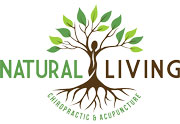The symptoms of temporomandibular (jaw) dysfunction (aka TMJ or TMD) are highly varible and can comprise one or more of the following: pain with chewing or at rest in the joint area, clicking or popping of the joint, open or close locking of the jaw, tooth or teeth pain (mimicking cavities or infection), facial and/or neck pain, headaches, tinnitis (ringing in the ears), and hypobaroacusis (stuffy ear with or without decreased hearing).
Causes of TMD include trauma (motor vehicle accidents, sports injuries, dental work, etc.). Restoration of normal temporomandibular joint (TMJ) function must be made via normalization of nerve control over the muscles that govern the TMJ. Abnormal neural input from the central nervous system due to upper cervical joint dysfunction (from traumatic injury) can result in abnormal TMJ muscle coordination. Following trauma to the upper cervical spine and temporomandibular joint, symptoms can be triggered immediately or can take months or years to develop.
A properly aligned spine helps the TM joint. Spinal and TMJ problems are often found together. Chiropractic care, especially in the area of the upper cervical spine and skull, often relieves pressure on the spine and the cranial bones. Sitting in a dentist's chair and keeping your jaw, head, neck and lower spine in an unnatural or uncomfortable position can also cause TMJ and spinal damage.
Often a chiropractic spinal adjustment can greatly benefit someone suffering from what had been thought to be only a TMJ problem. Conversely, an unhealthy skull/jaw alignment can put great stress upon the spinal column. There are documented cases of dental problems that, once corrected, have helped chiropractic patients to better hold their spinal adjustments.
